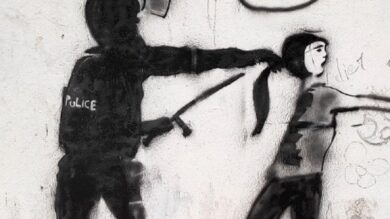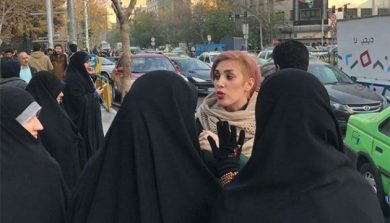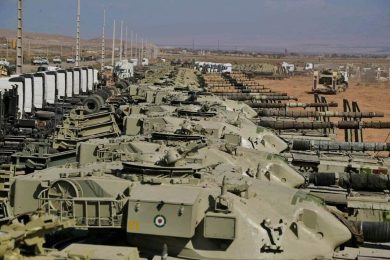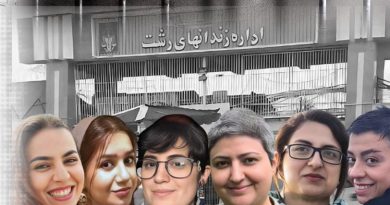For decades, Iranian women have been at the forefront of resistance movements, challenging oppressive laws and fighting for fundamental freedoms. What began as protests against the compulsory hijab has evolved into a broader political movement, demanding gender equality, democracy, and an end to authoritarian rule. The Islamic Revolutionary Guard Corps (IRGC) has responded with brutality, yet Iranian women persist, proving that their role in shaping Iran’s future is undeniable.
This article explores:
• How hijab protests became a political movement.
• The IRGC’s role in suppressing women.
• The women leading the resistance.
• How this movement is shaping Iran’s future and gaining global support.
1. The Hijab as a Symbol of Resistance
A. The Compulsory Hijab: A Tool of Control
Since the 1979 Islamic Revolution, the Iranian government has enforced strict dress codes for women.
• Women are legally required to wear the hijab in public.
• Morality police patrol streets, punishing those who defy the law.
• Refusing to wear the hijab can result in arrest, imprisonment, or violence.
For many, the hijab is not just a piece of cloth—it represents state control over women’s bodies and freedoms.
B. Mahsa Amini’s Death: A Turning Point
In September 2022, Mahsa Amini, a 22-year-old Kurdish woman, was arrested by the morality police for allegedly wearing her hijab “improperly.” She died in custody, sparking nationwide protests.
• Women publicly removed their hijabs, burned them in protests, and cut their hair in defiance.
• The slogan “Women, Life, Freedom” became a rallying cry for change.
• Protests quickly expanded beyond the hijab, demanding democracy and human rights.
This was no longer just a fight against the hijab law—it was a fight against the entire system.
2. From Personal Freedom to Political Revolution
A. Women as Political Catalysts
The hijab protests exposed deeper issues in Iranian society:
• Gender inequality in legal, economic, and social spheres.
• Political oppression by the IRGC and government.
• Economic hardship and lack of opportunities.
Women have transformed personal struggles into a collective demand for political change.
B. The IRGC’s Brutal Crackdown
The IRGC, tasked with protecting the regime, has used extreme force to crush dissent:
• Shooting protesters, resulting in hundreds of deaths.
• Mass arrests of women activists, journalists, and students.
• Surveillance and digital repression to track and silence dissenters.
Despite this, Iranian women continue to resist, refusing to be intimidated by the regime’s brutality.
3. Women Leading Iran’s Resistance
A. Brave Faces of the Movement
Women from all walks of life have emerged as leaders of Iran’s resistance:
• Narges Mohammadi – Imprisoned human rights activist, advocating for women’s rights.
• Nasrin Sotoudeh – Prominent lawyer defending women jailed for hijab protests.
• Masih Alinejad – Exiled journalist leading online campaigns against compulsory hijab laws.
• Sepideh Gholian – Labor rights activist, repeatedly jailed for protesting government policies.
These women continue to fight, despite threats, imprisonment, and torture.
B. Student and Worker Movements
Iranian universities and labor unions have also joined the fight:
• Female students stage walkouts and defy hijab laws in classrooms.
• Women workers protest against economic injustice, linking it to political repression.
The movement has become intersectional, uniting women, students, laborers, and ethnic minorities in a collective demand for change.
4. A Growing Threat to the Regime
A. Women’s Defiance is Weakening the IRGC
The IRGC relies on fear and control, but women’s defiance is shaking its power:
• More women are publicly refusing to wear hijabs, making enforcement impossible.
• IRGC’s violent response has fueled public outrage, even among religious conservatives.
• The international community is increasingly condemning Iran’s treatment of women.
Women are not backing down, and their resistance is destabilizing the regime’s grip on society.
B. Global Solidarity and Support
The movement has gained international attention, with:
• Global protests in support of Iranian women.
• Western sanctions targeting IRGC officials responsible for human rights violations.
• UN resolutions condemning Iran’s gender apartheid.
Iranian women’s fight is no longer just a national issue—it has become a global cause.
5. What’s Next? The Future of Women’s Resistance
A. Can the Regime Survive Women’s Defiance?
The Iranian government is struggling to maintain control as:
• The hijab law is increasingly unenforceable.
• More women join politics and activism, despite crackdowns.
• Public support for women’s rights grows, even among men.
Women are reshaping Iran’s political landscape, making it harder for the regime to sustain its authoritarian rule.
B. How the World Can Support Iranian Women
International support is crucial to protecting and amplifying Iran’s women-led resistance:
• Pressure governments to recognize the IRGC as a terrorist organization.
• Support Iranian activists, journalists, and exiled dissidents.
• Sanction IRGC officials responsible for gender-based oppression.
• Provide digital tools to help Iranian women bypass internet censorship.
Women are leading Iran’s fight for freedom—the world must stand with them.
Conclusion: Women Are Iran’s Future
What began as protests against the hijab has transformed into a nationwide revolution, with women leading the charge. Their courage, resilience, and defiance are reshaping Iran’s political landscape, making it clear that the future of a free Iran belongs to women.
Despite IRGC brutality, Iranian women refuse to surrender. Their fight for freedom, dignity, and equality is unstoppable, and their leadership is paving the way for a new Iran—one where women’s rights are human rights.
Join Our Newsletter!
Stay informed with the latest updates, news, and ways to take action in the fight for justice and global security. Sign up now to get updates delivered straight to your inbox!





